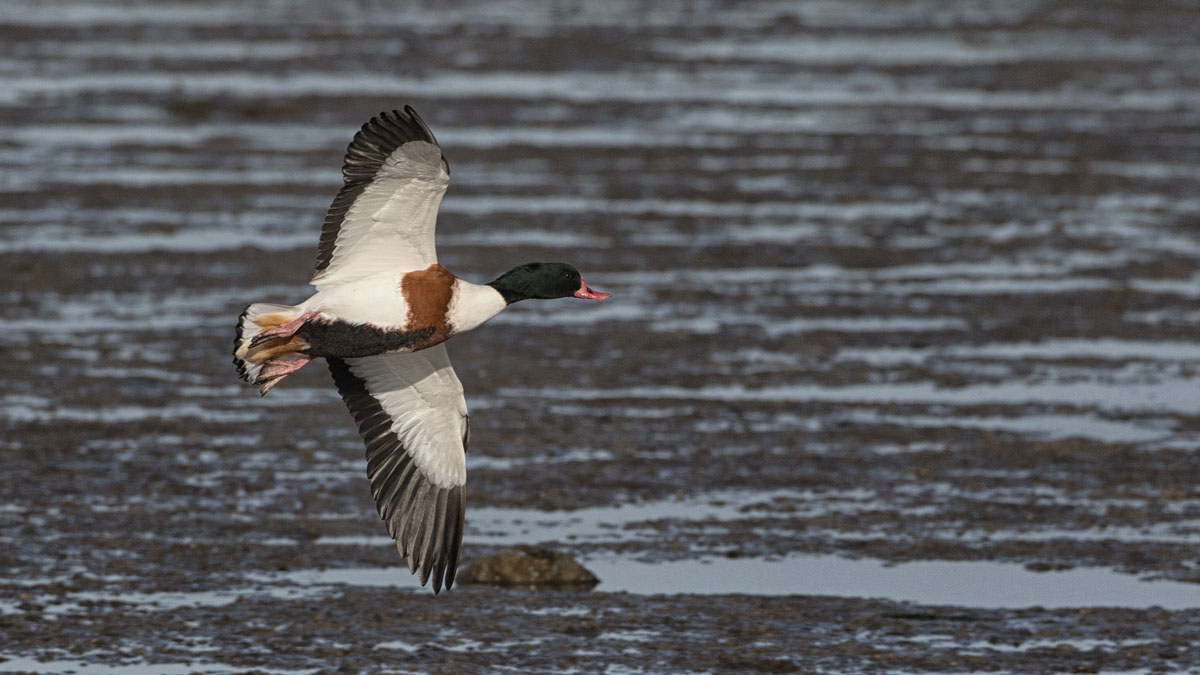BTO publishes peer-reviewed papers in a wide range of scientific journals, both independently and with our partners. If you are unable to access a scientific paper by a BTO author, please contact us.
Search settings
Migratory movements of British and Irish Common Shelduck Tadorna tadorna: a review of ringing data and a pilot tracking study to inform potential interactions with offshore wind farms in the North Sea
Author: Green, R.M.W., Burton, N.H.K. & Cook, A.S.C.P.
Published: 2021
New research from BTO has used GPS tracking to investigate how Shelduck interact with offshore wind turbines during migration across the North Sea.
16.03.21
Papers Ringing and Migration

Interventions can shift the thermal optimum for parasitic disease transmission
Author: Nguyen, K.H., Boersch-Supan, P.H., Hartman, R.B., Mendiola, S.Y., Harwood, V.J., Civitello, D.J. & Rohr, J.R.
Published: 2021
16.03.21
Papers
Climate and land use changes: similarity in range and abundance changes of birds in Finland and Great Britain
Author: Lehikoinen, A., Johnston A. & Massimino, D.
Published: 2021
12.03.21
Papers
Populations of high‐value predators reflect the traits of their prey
Author: Gutiérrez‐Cánovas, C., Worthington, T.A., Jâms, I.B., Noble, D.G., Perkins, D.M., Vaughan, I.P., Woodward, G., Ormerod, S.J. & Durance, I.
Published: 2021
12.03.21
Papers
Wader populations on the UK’s open coast: results of the 2015/16 Non-Estuarine Waterbird Survey (NEWS-III) and a review of population trends
Author: Author(s): Humphreys, E.M., Austin, G.E., Frost, T.M., Mellan, H.J., Boersch-Supan, P., Burton, N.H.K., Balmer, D.E.
Published: 2021
The research used data collected by volunteers participating in the Non-Estuarine Waterbird Survey (NEWS), which takes place approximately once every decade. Sites monitored by NEWS include those used by specialist species such as Turnstone, Ringed Plover and Purple Sandpiper. Many of these birds occur in internationally important numbers in the UK, yet the remote nature of much of our non-estuarine coast means that it is a habitat which is poorly monitored by the year-round Wetland Bird Survey (WeBS).The results showed that Oystercatcher was the most abundant species on the UK’s open and rocky shores, followed by Curlew and Turnstone. Worryingly, four species had significantly decreased in number or shifted their range since the previous survey in winter 2006/07: Lapwing, Curlew, Redshank and Turnstone. The declines in Curlew are reflected in both WeBS and breeding season survey results. Only one species, Sanderling, had significantly increased in number. Scotland supported the majority of the UK’s non-estuarine populations of Oystercatcher, Ringed Plover, Golden Plover, Lapwing, Purple Sandpiper, Bar-tailed Godwit, Curlew, Redshank and Turnstone. Even given the greater length of coast, Scotland is particularly important for Purple Sandpiper, Curlew, Redshank and Turnstone. However, all countries have non-estuarine coastal stretches which support high densities of waders, with north-east England, Orkney, North Wales and Outer Ards in Northern Ireland all notable.Habitat changes such as building sea defences and increased human activity may have contributed to reported declines — more regular monitoring of the non-estuarine coast would provide a better early warning of species change in this habitat, and could help suggest why these declines are taking place, and even the measures that could be taken to reverse them.
05.03.21
Papers